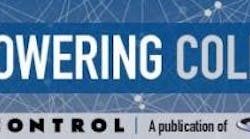As artificial intelligence rises and automation seems to be taking over many of our tasks, some people question the future of work and the importance of human intervention. But the role of the automation professional is secure so long as we’re willing to change. And it’s for the better.
“Around the world, in different cultures and organizations, automation professionals are taxed to not only deliver results today and next week, but also look to the future to define a path for continued competitive success and payback,” said Mike Train, executive president, Emerson Automation Solutions, to attendees of his opening keynote session at the 2017 Emerson Global Users Exchange, October 2 in Minneapolis. “Top quartile” facilities need game-changing automation strategies.
Today, 65% of projects greater than $1 billion fail to meet cost and schedule goals. “If they did, it would save industry $435 billion annually,” Train said. Emerson’s Project Certainty approach helps by reducing cost and complexity, and accommodating change. “Now, we’re supporting it with the Project Certainty Workshop,” to help users understand the products and methodology, he said. “Response has been terrific.”
[sidebar id =1]
Cloud-based engineering and collaboration, digital technology including the digital twin, and more modernized plants are lowering the total cost of ownership and generating value throughout the plant lifecycle. But in working to implement new methods, users are “staring down decades of established project methods,” he said. The Project Certainty Workshop helps by providing the tools to overcome that inertia.
On to operations
Next, “We’re taking on the $1 trillion annual losses due to suboptimal operations,” Train said. Emerson sees the opportunity to gain two weeks of production, reduce safety incidents by two-thirds, reduce operating costs by 20%, lower emissions by 30% and provide 4% higher availability.
Emerson’s Plantweb digital ecosystem lets users be certain of return on investment (ROI) by allowing experts to help make smart decisions based on information coming through a secure Internet-of-Things (IoT) infrastructure. Train said, “We are deeply investing to maintain your security” with Secure First Mile connectivity between operational systems, IT and the cloud to enable connected services, remote monitoring and support.
“The Plantweb digital ecosystem is an important investment for Emerson Automation Solutions,” Train said. “We’re doubling down on all industries in our commitment to our automation portfolio.”
People make it happen
Technology is an enabler, but it doesn’t do the job by itself. “We’re building a culture of collaboration, commitment and shared objectives to help you achieve business results, solve your problems and get you into the top quartile,” Train said.
Indeed, as companies take on big goals with great technology—and performance rolls in—many are asking, “What about the people?” Will automation and robots take their jobs? What becomes of them? Are we on the doorstep of dystopia?
Not at all. Like the streetsweepers of the late 1800s who cleaned up after the horse-driven transportation system of the time and then found new work in the emerging automobile industry, today’s long-haul truck drivers will become transportation pilots, guiding automated rigs onto off-ramps and into service centers and delivery docks from the comfort an office near their homes.
As the number of ATMs rose, the population of bank tellers has increased, not decreased, as banks opened more branches to be closer to their customers, and tellers shifted from dispensing cash to advising clients on their financial needs.
“Technology has always changed lives, so far, mainly by doing more with less and improving efficiency,” Train said. It’s been a big success, but now those efficiency gains are becoming smaller and harder to get. “Today, gains are smaller, expectations are higher and efficiency is no longer the path to the top quartile. We’re coming to the end of leadership by cutting costs.
“We need transformative digital technology—to reinvest in people.”
The more profitable you are, the more you can invest in the power of data and human intelligence. Control operators become production optimizers. Operations managers manage business outcomes. Maintenance technicians become asset doctors and wellness advisors. Production supervisors get 24/7 visibility and their personal lives back, as they no longer need to make those trips to the plant at 2 am.
Progress is being driven by advanced technologies including analytics, mobility, augmented reality and remote services. “These technologies are available to everyone. Why will some companies succeed while others lag? It’s about how companies manage change.”
Technology alone won’t get you there. It’s about how you leverage the technology to have people making good decisions and taking the right actions. “So, we’re developing the new digital worker, to give people the skills and knowledge through education and training,” Train said.
Companies complain about how tough it is to find qualified people. “We need to invest in technical trade schools like Sowela Technical Community College [in Lake Charles, Louisiana]. Emerson partners with more than 350 such facilities around the world,” Train said. “We want to raise awareness and help make manufacturing a rewarding career path, because what’s good for manufacturing is good for our economies.”
Automation is the central nervous system for safety, reliability and profit, as well as production. “Each of you, personally, is the champion for change in your organization,” Train said. “Cultural change is hard to drive. When you do it, automation professionals become business leaders.
“There are hundreds of ways to start small and make a great impact. We offer you roadmaps and the eyes, brains and muscles of automation. Use them.”




